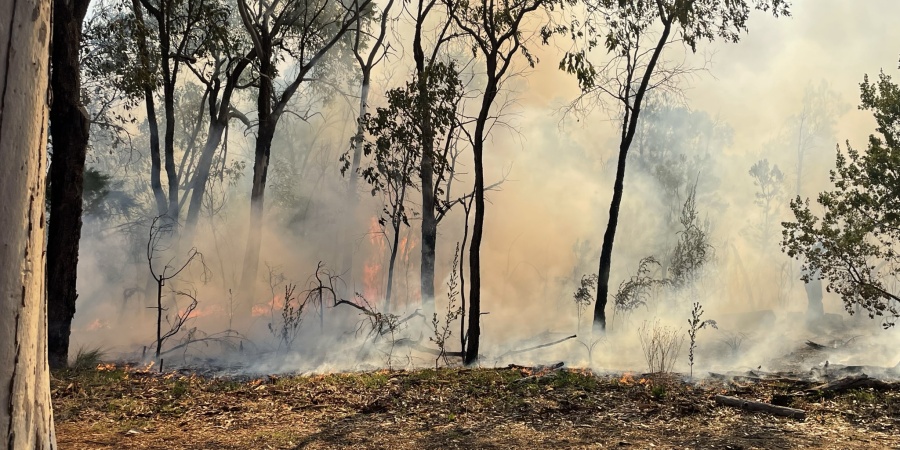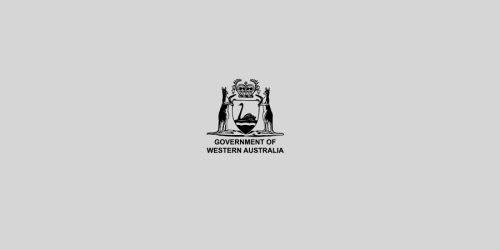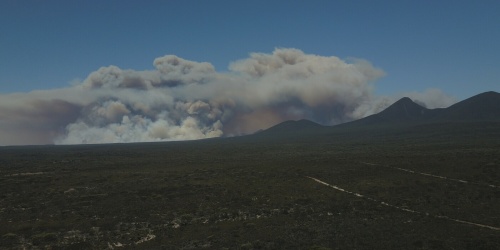
Kings Park Experimental burn. Photo Sally Treasure DBCA
Prescribed, controlled and planned burns are the same thing.
In Western Australia, they are referred to as prescribed burns because they follow a ‘prescription’ with a number of conditions that need to be met.
Why does Parks and Wildlife conduct prescribed burns?
The department uses prescribed burning for a number of purposes:
- to mitigate the severity of bushfires and to help protect lives and property by reducing the build-up of flammable fuel loads,
- to maintain biodiversity,
- to rehabilitate vegetation after disturbance, such as timber harvesting and mining,
- to undertake research on fire and its interaction with our environment.
What is involved in prescribed burning?
Prescribed burning involves careful planning, consultation and monitoring, including:
- determining what vegetation needs to be burnt and what needs to be left unburnt (mosaic), the desired fire intensity and the season
- considering the history and variety of past fire events over the landscape
- studying and measuring the quantity, arrangement and moisture content of fuels
- determining, monitoring and forecasting the right weather conditions for igniting a burn using knowledge about fire behaviour
- determining the best time of day to ignite a burn in a specified pattern and sequence to achieve the desired outcomes and to prevent fire from escaping
- monitoring the results of a burn to determine how well the operation met the objectives set for the burn
- using knowledge gained and lessons learned to improve future prescribed burning operations.
All of this is underpinned by a rigorous approvals process. The section on planning for prescribed burning has more detail on what is involved.
When does burning occur?
In the regions with distinct seasons, prescribed burning takes place in spring and autumn when conditions are cooler, vegetation and fuel moisture levels are higher and weather conditions are more stable.
In regions with wet and dry seasons, such as the Kimberley, burning is conducted from January to June (wet to early dry season), when winds are predictable and the ground vegetation is not fully cured, and fires tend to be relatively low intensity, patchy and limited in extent. Also night conditions are conducive to fires extinguishing. The section on fuel loads and fire intensity has more information about burning in different seasons.
Who is involved in prescribed burning?
In Western Australia, prescribed burning involves many players as part of a shared responsibility. Parks and Wildlife is responsible for prescribed burning on land that it manages. The department works effectively alongside and consults with the community, Department of Fire and Emergency Services (DFES), local governments and industries such as grape growers and other landholders. Wherever feasible, Parks and Wildlife, DFES and local government will conduct their prescribed burning programs as a joint exercise.
Is prescribed burning safe?
Community safety is our primary concern when carrying out prescribed burns. Prescribed burning is a simple concept that depends on complex factors that are not always predictable; therefore there is always an element of risk associated when burning. Each prescribed burn is heavily scrutinised and has to pass a rigorous approvals process before any burning can begin. Prescribed burning does not mean that there will never be large damaging bushfires however it does help to make them less likely.
Is prescribed burning effective?
Yes. Scientific research shows that prescribed burning is very effective, especially when managing bushfires. We know from experience over a wide range of weather conditions and vegetation types that direct attack on bushfires with flame heights of more than three meters or where fires are moving faster than 200 metres per hour (in forest) is not likely to succeed. Fire behaviour is directly affected by the amount of available fuel. Therefore, direct attack on the flanks of a fire is likely to succeed where fires run into recently burnt areas of low fuel.
The special inquiry report of the 2011 Perth Hills bushfire ‘A Shared Responsibility’ highlights an example of the effectiveness of prescribed burning.
“The reduced fire intensity and rate of spread observed when bushfires enter a reduced fuel area allows firefighters greater opportunity to effectively combat the fire and to limit its impact. In fact, the Special Inquiry heard evidence that the Roleystone-Kelmscott fire was extinguished on one front when it entered a section of the Banyowla Regional Park that had been the subject of a prescribed burn by DEC (now the Department of Parks and Wildlife) four years ago, as discussed later in this chapter”.
The 2011 Perth Hills bushfire caused serious damage but the destruction in this fire prone area was limited by prescribed burns undertaken in the previous four years at strategic locations.
How does Parks and Wildlife manage the risk of escapes?
Prescribed burning is not without risk. However the department, through scientific research and experience has made changes and implemented procedures to minimise the risk of potential escapes.
The department has recently undergone some major changes to ensure deliberate and pro-active risk management is applied to keep the risks associated with prescribed fire as low as reasonably practicable and aligning its risk management processes with the international standard ISO 31000 for risk management.
The Western Australian Government, through the Department of Fire and Emergency Service’s (DFES) Office of Bushfire Risk Management (OBRM), has endorsed the department’s approach to bring its prescribed burning into line with the international risk management standard ISO 31000.
OBRM is working with government and non-government organisations to align Western Australia’s bushfire business with ISO 31000. On behalf of DFES, OBRM also guides and facilitates the management of bushfire risk in Western Australia and reports on the annual management of bushfire fuel across Western Australia. For more information on DFES and OBRM visit dfes.wa.gov.au.
Daily risk monitoring and management
As part of the Department of Parks and Wildlife’s risk management approach, all burns are constantly monitored. Burns are classified each day and those determined to be active (see definition below) are scrutinised through the day to ensure the risk of escape is as low as reasonably possible.
Active prescribed burns
Parks and Wildlife carries out prescribed burns on land it manages. Burns also occur on private property or other land. For information contact your local authority.
Active burns are prescribed burns that have not been certified as completed. In the rangelands, the presence of hot spots detected by satellite surveillance over two consecutive days, means a burn is classified as active. In all other lands, a burn if still classified as active if there has been less than 30mm of rain (total) in the five days since the last ignition or that in the prior three days running fire has been observed or smoke has been reported within at least 100m of the burn boundary or within any area of unburnt fuel greater than 5ha that is within 500m of the burn.
Local fire restrictions may still be in place and must be adhered to, even if Parks and Wildlife is carrying out prescribed burns on public land. Visit the Department of Fire and Emergency Services for more information.


